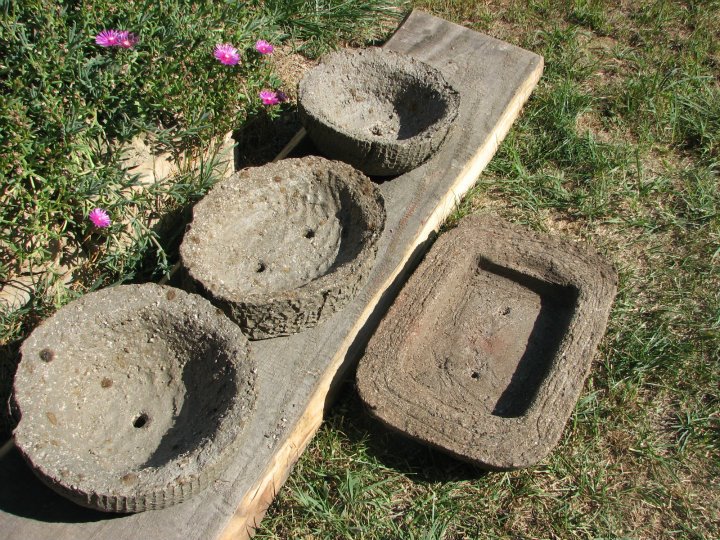@TN_Jim &
@penumbra
Warning - Leo's gratuitous "disambiguation page"
I got curious, so while having morning coffee I wandered through half a dozen Wikipedia pages.
Tufa - is a soft limestone, as in the limestone found at Mono Lakes, California. It soft, easily carved, very porous. It has been used as an aquarium decoration for tropical fish that prefer hard, alkaline water (for African Rift Lake cichlids). If exposed to freeze thaw cycles or acidic conditions, this rock will break down over time. Its porosity varies, the less porous the longer it will last in freeze-thaw cycling and the longer it will last in acidic water conditions. This rock is similar to travertine which forms in hots springs. Popular for certain architectural accent uses, and for carved art. Softer than marble, it will not hold detail like marble, but useful because it is relatively easy to shape blocks for construction. For example there are two bridges constructed of tufa in a park in Pittsburg, PA.
Tuff - is lithified volcanic ash that has been deposited during a volcanic explosion (for example, Mt Saint Helens, WA). It is viewed as both an igneous rock (volcanic) and a sedimentary rock. It is usually fairly soft. The large statues, moai, of Easter Island were carved from tuff. It is often called "tuffa" in the landscaping, aquarium, horticultural and art supplies trade. The term "tuffa" is not a technically correct term, but gets used a lot. This rock is often used in the aquarium trade and for carved "tuffa" pots in the horticulture and landscape trades. The chemical properties of tuff are similar to pumice and lava, largely inert, slightly acidic, highly porous. Because it is porous it will break down with freeze thaw cycling. As a landscape object, in warm regions it is very long lasting, in cold winter areas it will deteriorate over the course of multiple winters. The crumbling is part of its charm.
Hypertufa - also sometimes called tufa or tuffa, is a man made concrete product. Most common formula is portland cement, sand, aggregate and some organic material such as newspaper or peat moss. This product is used frequently for home "art projects". Usually hypertufa is cast, or poured into a mold, and allowed to set up. The resulting concrete is very soft, due to the organic component. It is weak, easily carved after it has set. It does not have the compressive strength of construction grade concrete. The organic component allows water to wick into, and out of the hypertufa. This allows mosses and epiphytic plants to easily colonies the outside of the container. Freeze thaw cycling will rapidly break down the container. The outer surface will spall off. This deterioration is part of the "charm" of hypertufa, as the intermediate states with moss growing and rounded features are considered attractive. Acidic water will also erode the hypertufa. In the horticulture trades, offen man made hypertufa gets referred to incorrectly as "tuffa" which can cause some confusion. I don't know how often hypertufa is used in the aquarium trade, but once the excess calcium hydroxide is leached out the the hypertufa, "cured" as in the way concrete tanks and ponds need to be "cured", it would be safe for aquarium use.
Hope this clears up which is which. So tufa is a soft limestone formed in ambient temperature lakes, springs and similar situations. Tuff is a volcanic ash sedimentary rock, and hypertufa is man made soft concrete product. All are frequently incorrectly referred to as "tuffa".
And I will admit, I went down this rabbit hole, because I didn't know which was which when the term "tuffa" was used. For those that are still curious, I will cite my sources.

en.wikipedia.org

en.wikipedia.org

en.wikipedia.org


